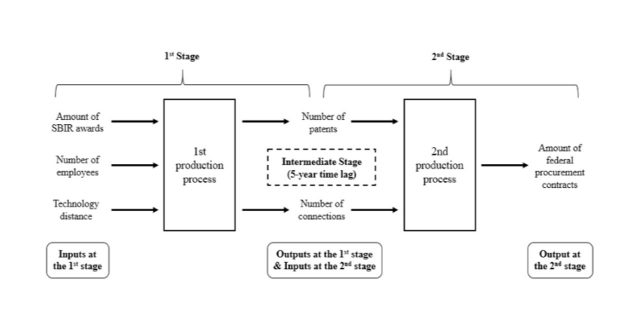While there is a plethora of literature on overall innovation or technology transfer (or spin-out), there is a paucity of studies on technology transition (or spin-in). This study fills the gap in the existing literature by assessing the technology transition performance of 252 small firms that have won the U.S. Department of Defense (DoD) Small Business Innovation Research (SBIR) Phase II awards from 2001 to 2010 and have filed more than 15 patents (“elite DoD SBIR awardees”) and by exploring how social capital is associated with the performance. To attain the purpose, we propose the use of data envelopment analysis with a time lag, which incorporates two-stage production processes, and apply a non-parametric test (i.e., Kruskal-Wallis) to examine the statistical relationship between social capital measures, such as network centrality and technological distance, and the technology transition performance. Our findings are two folds: (a) more than a quarter of the elite DoD SBIR awardees are efficient and the distribution of efficiency scores is left-skewed and (b) the technology transition performance has a negatively linear relationship with technological distance but a U-shaped relationship with network position measures (e.g., eigenvector centrality).

【Published】Performance assessment on technology transition from small businesses to the U.S. Department of Defense
WRHI News
(School of Environment and Society / Dr. Toshiyuki Sueyoshi)
”Performance assessment on technology transition from small businesses to the U.S. Department of Defense”
Socio-Economic Planning Sciences (DOI: 10.1016/j.seps.2021.101177)
For details, click here.
<Abstract>
